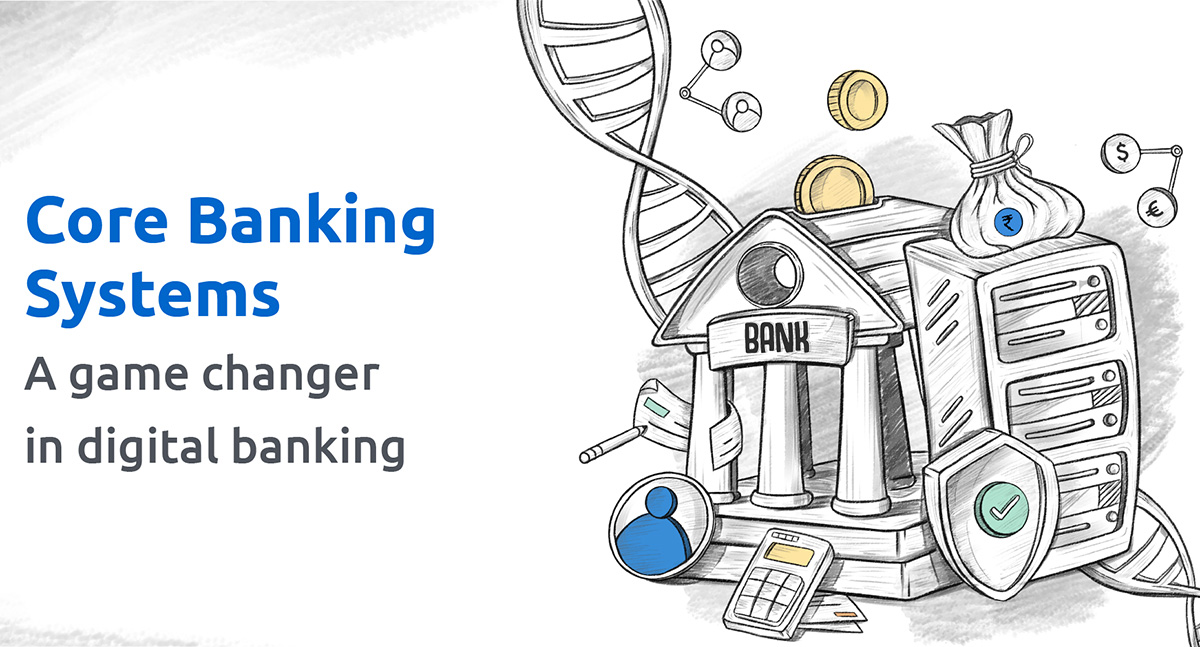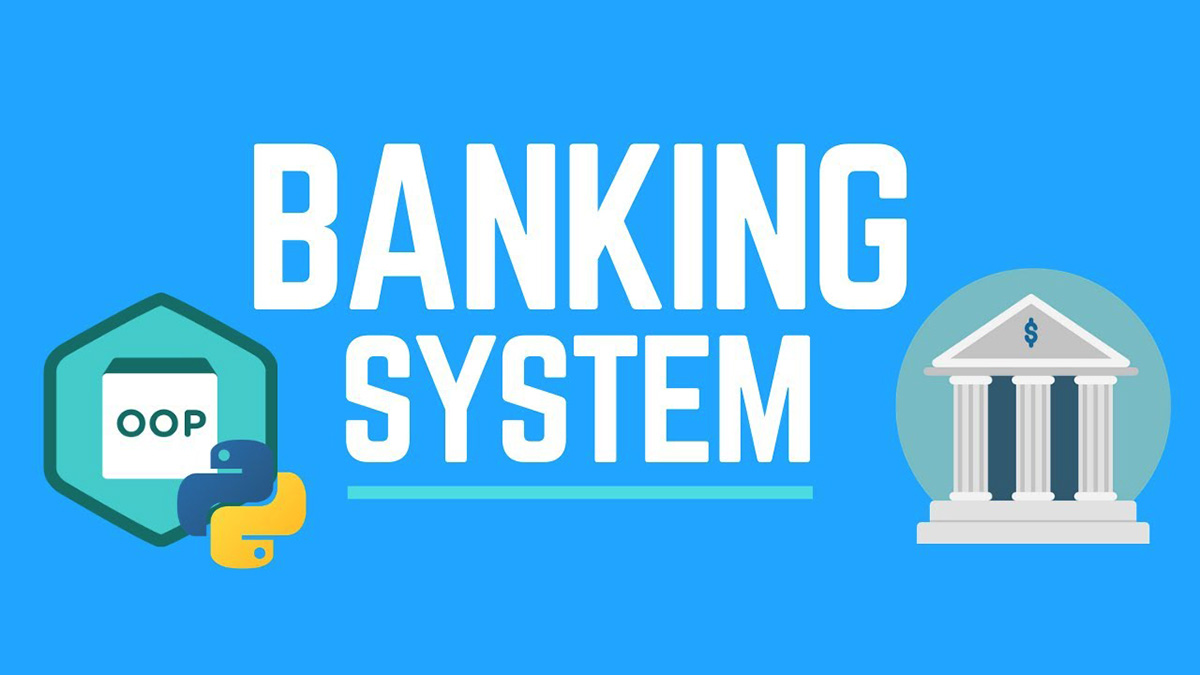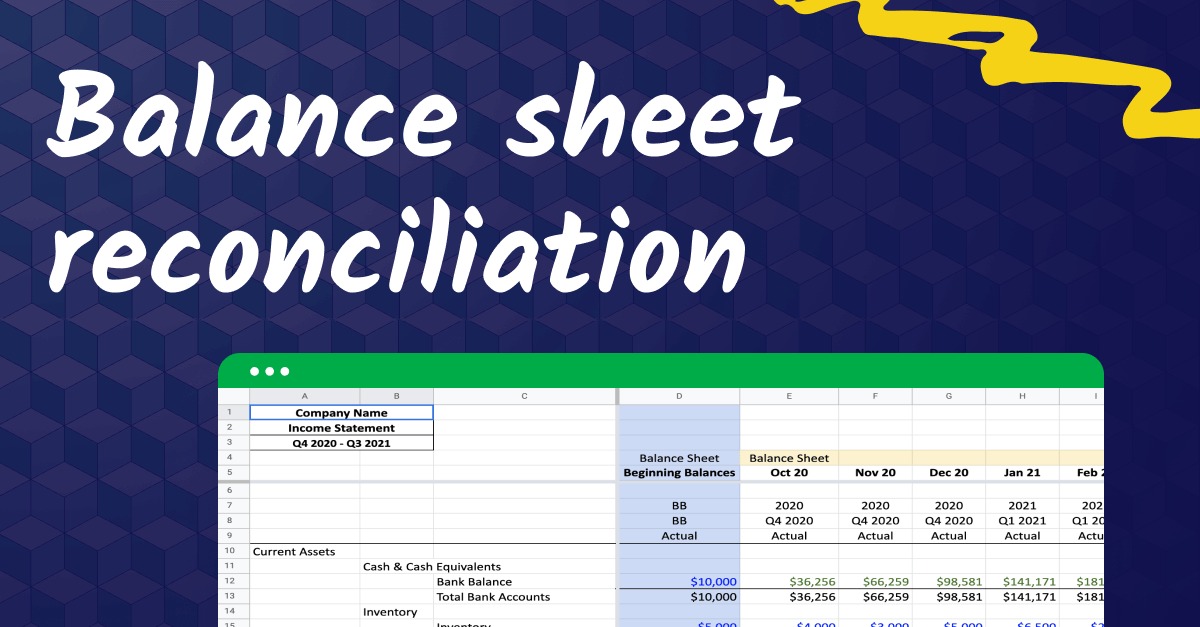

Finance
What Is The TRB Banking System
Published: October 13, 2023
Discover the TRB Banking System and how it revolutionizes finance. Enhance your banking experience and stay ahead in the world of finance with TRB.
(Many of the links in this article redirect to a specific reviewed product. Your purchase of these products through affiliate links helps to generate commission for LiveWell, at no extra cost. Learn more)
Table of Contents
Introduction
Welcome to the world of TRB Banking System, where banking and technology converge to create a seamless and efficient financial experience. In today’s fast-paced digital era, traditional banking is being revolutionized by innovative solutions that aim to optimize processes and enhance customer satisfaction. TRB Banking System is at the forefront of this transformation, offering a comprehensive suite of features and functionality that cater to the needs of both financial institutions and their customers.
Gone are the days of long queues, tedious paperwork, and limited banking hours. With TRB Banking System, individuals and businesses can enjoy the convenience of banking anytime, anywhere. Whether you need to check your account balance, transfer funds, or apply for a loan, TRB Banking System has got you covered. This advanced software solution streamlines banking processes, eliminates manual errors, and provides real-time access to financial information.
TRB Banking System is designed for banks of all sizes, from local community banks to multinational financial institutions. It encompasses a wide range of modules, including core banking, customer relationship management (CRM), lending and credit management, treasury management, and more. This comprehensive suite of features ensures that banks can efficiently manage their operations and offer a wide range of services to their customers.
Furthermore, TRB Banking System is built with scalability in mind. As banks grow and expand, they can easily scale up their operations and add new functionalities to meet evolving customer demands. This flexibility allows banks to stay ahead of the curve and remain competitive in a rapidly changing industry.
In the next sections, we will explore the key features and functionality of TRB Banking System, as well as the benefits it offers to both banks and customers. We will also delve into how the system works, the security measures in place, and its integration and compatibility with other banking platforms. Let’s dive into the world of TRB Banking System and discover how it can revolutionize the way financial institutions operate.
Overview of TRB Banking System
The TRB Banking System is a comprehensive software solution specifically designed for the banking industry. It provides a wide range of modules and features that cover all aspects of banking operations, from core banking functions to customer relationship management (CRM), lending and credit management, treasury management, and more. This holistic approach to banking technology ensures that financial institutions can effectively manage their operations and offer a seamless and personalized experience to their customers.
One of the key strengths of the TRB Banking System is its user-friendly interface. The system is built with a focus on usability, making it easy for bank employees to navigate and perform their daily tasks efficiently. This intuitive design reduces the need for extensive training and minimizes the learning curve for users, resulting in increased productivity and reduced operational costs.
Another standout feature of the TRB Banking System is its flexibility and scalability. Financial institutions of all sizes can benefit from this software solution, as it can easily adapt to the specific needs and requirements of each bank. Whether a small community bank or a large multinational institution, the TRB Banking System can be customized to meet the unique demands of any organization, allowing for seamless integration with existing infrastructure and support for future growth.
The TRB Banking System also offers advanced analytics and reporting capabilities. Banks can gain valuable insights into customer behavior, transaction patterns, and overall financial performance through comprehensive and real-time reports. This data-driven approach empowers banks to make informed decisions, identify growth opportunities, and improve operational efficiency.
Furthermore, the TRB Banking System is designed to ensure regulatory compliance. With ever-evolving regulations and increased scrutiny on financial institutions, it is crucial for banks to have solutions in place that can help them comply with various industry standards and legal requirements. The TRB Banking System incorporates robust security measures, data encryption, and audit trails to ensure the security and integrity of sensitive financial information.
Overall, the TRB Banking System provides a comprehensive and integrated solution for banks to streamline their operations, enhance customer satisfaction, and stay ahead in the highly competitive banking landscape. With its user-friendly interface, scalability, advanced analytics, and regulatory compliance features, the TRB Banking System is a game-changer for banks looking to leverage technology to drive growth and success.
Features and Functionality
The TRB Banking System offers a plethora of features and functionality that empower banks to streamline their operations, improve efficiency, and deliver exceptional customer experiences. Let’s explore some of the key features of this innovative software solution:
- Core Banking: The core banking module of the TRB Banking System serves as the central hub for all banking operations. It enables banks to manage customer accounts, process transactions, and maintain an accurate and up-to-date record of financial activities.
- Customer Relationship Management (CRM): The CRM module helps banks build strong relationships with their customers by centralizing customer information, tracking interactions, and providing personalized services. Banks can gain insights into customer preferences and behavior, allowing them to offer tailored products and services that meet individual needs.
- Lending and Credit Management: The lending and credit management module of the TRB Banking System streamlines the loan origination and credit assessment processes. Banks can efficiently manage loan applications, conduct risk assessments, and monitor loan repayment schedules. This module ensures that banks can make informed lending decisions while minimizing credit risks.
- Treasury Management: The treasury management module enables banks to effectively manage their treasury operations, including cash management, liquidity management, risk management, and investment portfolio management. This module provides real-time insights into liquidity positions, helps optimize cash flows, and supports decision-making related to investments and risk management.
- Payment Processing: The payment processing feature of the TRB Banking System enables banks to facilitate various payment transactions, including funds transfers, bill payments, and online payments. It supports different channels such as online banking, mobile banking, and ATMs, providing customers with convenient and secure payment options.
- Digital Channels: The TRB Banking System offers a range of digital channels, including internet banking and mobile banking applications. These channels enable customers to access their accounts, perform transactions, and engage with the bank anytime, anywhere. The user-friendly interface and seamless integration with the core banking module ensure a consistent and personalized banking experience across all channels.
- Reporting and Analytics: The reporting and analytics capabilities of the TRB Banking System provide banks with comprehensive insights and data-driven decision-making. Banks can generate customized reports on customer behavior, product performance, financial performance, and regulatory compliance. These reports help banks identify trends, optimize operations, and uncover growth opportunities.
The TRB Banking System offers these features and many more, giving banks the tools they need to stay competitive in today’s digital banking landscape. Whether it’s core banking functionality, customer relationship management, lending and credit management, treasury management, payment processing, or sophisticated reporting and analytics, the TRB Banking System is a comprehensive solution that empowers banks to thrive in the ever-evolving financial industry.
Benefits of Using TRB Banking System
The TRB Banking System brings a host of benefits to banks and their customers, revolutionizing the way financial institutions operate and enhancing overall banking experiences. Let’s explore some of the key advantages of using this innovative software solution:
- Improved Efficiency: The TRB Banking System automates manual processes, reduces paperwork, and eliminates human errors, resulting in improved operational efficiency. Banks can process transactions faster, streamline account management, and reduce the need for manual intervention, freeing up time for employees to focus on higher-value tasks.
- Enhanced Customer Experience: The TRB Banking System offers a seamless and personalized banking experience for customers. They have access to a wide range of services, including online banking, mobile banking, and personalized financial advice. This convenience and accessibility enhance customer satisfaction and loyalty.
- Cost Savings: By streamlining processes and reducing manual intervention, the TRB Banking System helps banks cut operational costs. The automation of tasks, such as transaction processing and account management, reduces the need for human resources, resulting in significant cost savings for financial institutions.
- Compliance and Security: Compliance is a critical aspect of the banking industry, and the TRB Banking System ensures that financial institutions meet regulatory requirements. The system incorporates robust security measures, data encryption, and audit trails to safeguard sensitive financial information and protect against fraudulent activities.
- Business Growth: With the TRB Banking System, banks can expand their services and reach a wider customer base. The scalability of the system allows financial institutions to add new functionalities and adapt to changing market demands. This flexibility enables banks to stay competitive and drive business growth.
- Data-Driven Insights: The TRB Banking System provides advanced analytics and reporting capabilities, giving banks valuable insights into customer behavior, product performance, and overall financial health. This data-driven approach empowers banks to make informed decisions, tailor products and services, and identify new revenue opportunities.
- Streamlined Collaboration: The TRB Banking System promotes seamless collaboration among bank employees, departments, and branches. It provides a centralized platform where relevant information can be shared and accessed, ensuring effective communication and coordination across the organization.
These benefits demonstrate the tremendous value that the TRB Banking System brings to financial institutions. With improved efficiency, enhanced customer experiences, cost savings, compliance and security measures, business growth opportunities, data-driven insights, and streamlined collaboration, banks can truly harness the power of this software solution to drive success in today’s competitive banking landscape.
How TRB Banking System Works
The TRB Banking System operates by integrating various modules and functionalities to provide a comprehensive banking solution. Let’s explore the key components and processes involved:
Integration: The TRB Banking System integrates with the existing infrastructure of a bank, including core banking systems, databases, and other relevant applications. This integration ensures smooth data flow and seamless communication between different components of the system.
Core Banking: At the heart of the TRB Banking System is the core banking module. This module serves as the central repository for customer data, account information, and transaction records. It handles the core banking functions such as account management, transaction processing, and interest calculations.
Customer Relationship Management (CRM): The CRM module of the TRB Banking System provides a centralized platform to manage customer information and interactions. It captures important data such as customer profiles, transaction history, and communication logs. This information enables banks to provide personalized services and targeted marketing campaigns.
Lending and Credit Management: The lending and credit management module handles the loan origination process, credit assessment, and loan servicing. Banks can efficiently manage loan applications, conduct risk assessments, and monitor repayment schedules. This module ensures that lending activities are streamlined and risk is managed effectively.
Treasury Management: The TRB Banking System offers a treasury management module that enables banks to manage liquidity, monitor cash positions, and optimize investment portfolios. It provides real-time insights into cash flows, allows for efficient management of funds, and helps banks mitigate risks associated with treasury operations.
Payment Processing: The payment processing feature of the TRB Banking System facilitates various payment transactions, such as funds transfers, bill payments, and online purchases. It supports multiple channels, including online banking, mobile banking, and ATMs, allowing customers to make transactions conveniently and securely.
Digital Channels: The TRB Banking System provides digital banking channels, such as internet banking and mobile banking applications. These channels enable customers to access their accounts, perform transactions, and access banking services anytime, anywhere. The seamless integration with the core banking module ensures consistency and accuracy across different channels.
Reporting and Analytics: The TRB Banking System offers robust reporting and analytics capabilities. Banks can generate customized reports on various aspects of their operations, including customer behavior, product performance, financial health, and regulatory compliance. These reports help banks make data-driven decisions, optimize processes, and identify growth opportunities.
The TRB Banking System works by seamlessly integrating these modules and functionalities, providing financial institutions with a holistic and efficient solution to manage their operations and offer superior banking services to their customers. Through automation, data integration, and advanced analytics, banks can enhance efficiency, improve customer experiences, and drive growth in the dynamic banking landscape.
Security Measures in TRB Banking System
Security is of utmost importance in the banking industry, and the TRB Banking System incorporates robust measures to ensure the protection of sensitive financial information. Let’s explore the key security features and measures implemented in the TRB Banking System:
- Data Encryption: The TRB Banking System uses advanced encryption algorithms to secure data transmission and storage. This ensures that customer information, transaction details, and other sensitive data are encrypted to prevent unauthorized access or tampering.
- Secure Authentication: To prevent unauthorized access to accounts, the TRB Banking System employs strong authentication mechanisms. It supports multi-factor authentication, including passwords, biometrics, and secure tokens, to verify the identity of users and ensure secure login procedures.
- Access Controls: The TRB Banking System implements strict access controls to restrict user privileges and ensure that only authorized individuals have access to sensitive data and banking functionalities. User roles and permissions can be defined, granting appropriate levels of access based on job responsibilities and functions.
- Audit Trails: To ensure accountability and traceability, the TRB Banking System maintains detailed audit trails. This means that every transaction and system activity is logged and recorded, allowing banks to track and investigate any suspicious or irregular activities.
- Firewall Protection: The TRB Banking System utilizes firewalls to create a secure boundary between the internal banking network and external networks. This prevents unauthorized access, intrusions, and attacks from malicious entities, ensuring the integrity and confidentiality of sensitive information.
- Intrusion Detection and Prevention: The TRB Banking System employs advanced intrusion detection and prevention systems to identify and mitigate potential security threats. Real-time monitoring and analysis help detect and respond to suspicious network activities, ensuring prompt action to protect the banking system from attacks.
- Regular Updates and Patches: The TRB Banking System is regularly updated with the latest security patches and software updates. This ensures that any vulnerabilities or known security issues are addressed promptly, minimizing the risk of exploitation by hackers or cybercriminals.
- Employee Awareness and Training: The TRB Banking System emphasizes the importance of employee awareness and training in maintaining security. Banks using the system provide comprehensive training programs to employees, ensuring they are knowledgeable about security best practices, data handling, and potential threats.
By implementing these security measures, the TRB Banking System provides a robust and secure environment for financial institutions and their customers. The combination of data encryption, secure authentication, access controls, audit trails, firewall protection, intrusion detection and prevention systems, regular updates, and employee training help safeguard sensitive financial data and protect against security breaches, fraud, and unauthorized access.
It is worth noting that as a part of the security measures, financial institutions using the TRB Banking System are also encouraged to adhere to industry regulations and standards, such as data privacy laws, cybersecurity best practices, and legal compliance requirements. This ensures comprehensive protection of customer data and promotes trust and confidence in the banking system.
Integration and Compatibility
The TRB Banking System is designed to seamlessly integrate with existing banking infrastructures, ensuring compatibility with a wide range of hardware, software, and operating systems. Let’s explore the key aspects of integration and compatibility in the TRB Banking System:
Modularity: The TRB Banking System is modular in nature, allowing banks to choose and implement specific modules based on their unique requirements. This modularity ensures that the system can be seamlessly integrated with existing banking applications, databases, and third-party systems.
APIs and Middleware: The TRB Banking System provides APIs (Application Programming Interfaces) that facilitate integration with third-party systems. These APIs allow banks to connect the TRB Banking System with other applications, such as payment gateways, credit bureaus, and regulatory reporting systems. Middleware tools are also available to facilitate data exchange and communication between different systems.
Database Compatibility: The TRB Banking System is built to work with various database systems, including Oracle, Microsoft SQL Server, and MySQL. This flexibility ensures that banks can leverage their existing database infrastructure, minimizing the need for additional database management or migration.
Legacy System Integration: The TRB Banking System recognizes the significance of legacy systems in the banking industry. It provides integration capabilities that allow banks to integrate legacy systems with the TRB Banking System. This integration enables banks to modernize their operations without disrupting existing processes.
Scalability: The TRB Banking System is designed to support scalability, allowing banks to grow and expand their operations without compromising performance and efficiency. As banks add new branches or introduce new products and services, the system can scale up to accommodate increased volumes of data and transactions.
User Interface Customization: The TRB Banking System provides the flexibility to customize the user interface to match the bank’s branding and design requirements. This customization ensures a seamless user experience and enhances the bank’s overall brand image.
Mobile and Digital Integration: The TRB Banking System seamlessly integrates with mobile banking applications and digital channels, providing a unified and consistent experience across various platforms. Customers can access their accounts, perform transactions, and avail banking services through mobile devices, ensuring convenience and flexibility.
Overall, the TRB Banking System offers extensive integration and compatibility capabilities, enabling banks to optimize their existing infrastructure while leveraging the advanced functionalities of the system. This seamless integration ensures a smooth transition and minimal disruption to ongoing operations. With its flexibility, scalability, and support for legacy systems, the TRB Banking System empowers banks to embrace digital transformation while maintaining compatibility with existing systems and technologies.
Customer Support and Training
The TRB Banking System places a strong emphasis on customer support and training, recognizing the importance of providing ongoing assistance and ensuring that bank employees are equipped with the necessary knowledge and skills to effectively utilize the system. Let’s explore the key aspects of customer support and training in relation to the TRB Banking System:
Comprehensive Training Programs: Banks that implement the TRB Banking System receive comprehensive training programs tailored to their specific needs. These training programs cover various aspects of the system, including functionality, navigation, and best practices for optimal utilization. Training sessions can be conducted onsite or remotely, providing flexibility to accommodate the bank’s requirements.
User Documentation and Manuals: The TRB Banking System provides user documentation and manuals that serve as valuable resources for bank employees. These materials contain detailed instructions, step-by-step guides, and troubleshooting tips to assist users in navigating the system effectively.
Help Desk and Technical Support: The TRB Banking System offers a dedicated help desk and technical support team to address any queries or issues that may arise during system implementation or daily usage. Banks can access support through various channels, including phone, email, or a dedicated support portal. The help desk team is equipped to provide timely assistance and resolutions to ensure smooth operations.
Continuous System Updates: The TRB Banking System periodically releases updates and enhancements to improve functionality and address any issues or bugs. Banks are provided with information about these updates and offered assistance in implementing them. Regular updates ensure that banks benefit from the latest features and security enhancements.
Training for New Features and Functionality: As the TRB Banking System evolves and introduces new features and functionality, banks receive additional training to familiarize their employees with these enhancements. This ensures that banks can harness the full potential of the system and stay up-to-date with the latest advancements in banking technology.
Knowledge Sharing and User Community: The TRB Banking System fosters a user community where bank employees can share their experiences, best practices, and lessons learned. This collaborative environment allows users to learn from one another, share insights, and troubleshoot common issues collectively. The user community serves as a valuable resource for ongoing learning and knowledge sharing.
Onsite Support and Consultation: In addition to remote support, the TRB Banking System offers onsite support and consultation services. This may include system audits, process optimization, and personalized assistance tailored to the specific needs of each bank. Onsite support ensures that banks receive hands-on guidance and recommendations directly from experienced professionals.
The TRB Banking System is committed to providing exceptional customer support and comprehensive training programs to ensure that banks can maximize the benefits of the system. By offering training, user documentation, help desk support, regular updates, and a user community, the TRB Banking System empowers bank employees to effectively utilize the system, troubleshoot issues, and stay informed about new features and enhancements. This strong focus on customer support and training contributes to the successful implementation and ongoing utilization of the TRB Banking System.
Conclusion
The TRB Banking System revolutionizes the way financial institutions operate, providing a comprehensive and innovative software solution that enhances efficiency, improves customer experiences, and ensures regulatory compliance. With its wide range of features and functionalities, the TRB Banking System empowers banks of all sizes to streamline their operations, offer personalized services, and stay ahead in the competitive banking landscape.
By seamlessly integrating with existing banking infrastructure and offering compatibility with various hardware and software systems, the TRB Banking System ensures a smooth transition and minimal disruption during implementation. Its modular design allows for flexibility and scalability, enabling banks to adapt to changing customer demands and optimize their operations without compromising performance.
The TRB Banking System prioritizes security, incorporating robust measures such as data encryption, secure authentication, access controls, audit trails, and firewall protection. These security measures protect sensitive financial information, safeguard against fraudulent activities, and enhance customer trust and confidence.
Furthermore, the TRB Banking System places a strong emphasis on customer support and training, providing comprehensive training programs, user documentation, help desk support, and continuous system updates. This commitment to customer success ensures that bank employees are equipped with the necessary knowledge and skills to effectively utilize the system and drive operational excellence.
In conclusion, the TRB Banking System is a game-changer for the banking industry, empowering financial institutions to optimize their operations, enhance customer experiences, and achieve sustainable growth. With its advanced features, seamless integration, robust security, and comprehensive support, the TRB Banking System sets a new standard for modern banking technology. Banks that embrace this innovative solution are well-positioned to meet the evolving needs of customers, strengthen their competitive edge, and thrive in the digital era.














